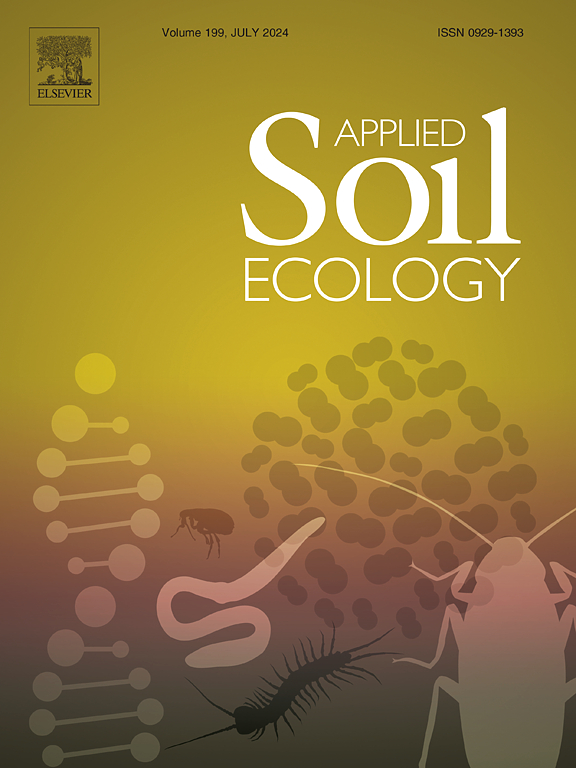Soil faunal community transfers nutrient cycling functionality and plant-parasitic nematode suppression from different depths of a natural soil to an agricultural soil
IF 4.8
2区 农林科学
Q1 SOIL SCIENCE
引用次数: 0
Abstract
Soil biota play a pivotal role in shaping various ecosystem functions, ultimately contributing to soil health and human well-being. In this study, soil samples from four depths were collected from a remnant vegetation site and used as donor soil to assess whether soil fauna could transfer ecosystem functions, such as nitrogen (N) and phosphorus (P) cycling and nematode pest suppression, to a homogenised agricultural soil (receptive soil) in three incubation experiments. Ammonium, nitrate and plant-available phosphorus concentrations were measured as proxies for nutrient cycling, while the abundance of the two key plant-parasitic nematodes, Pratylenchus neglectus and Merlinius brevidens, served as proxies for plant-parasitic nematode suppression. Results revealed that soil fauna facilitated the transfer of up to 26 % more nitrogen from donor to receptive soil, but phosphorus levels remained unaffected. Nematode suppression effects were depth-specific and species-specific. The organic layer showed the highest nematode suppression, but depth 0–10 cm yielded the highest plant growth, suggesting physicochemical constraints in the organic layer. Nematode-based indices shifted towards a more mature and structured soil food web in the receptive soil. This study demonstrates the significant role of soil fauna in performing ecosystem functions particularly N cycling and plant-parasitic nematode suppression. These findings highlight the potential for using targeted soil amendments to enhance soil health, ultimately contributing to sustainable plant growth.
求助全文
约1分钟内获得全文
求助全文
来源期刊

Applied Soil Ecology
农林科学-土壤科学
CiteScore
9.70
自引率
4.20%
发文量
363
审稿时长
5.3 months
期刊介绍:
Applied Soil Ecology addresses the role of soil organisms and their interactions in relation to: sustainability and productivity, nutrient cycling and other soil processes, the maintenance of soil functions, the impact of human activities on soil ecosystems and bio(techno)logical control of soil-inhabiting pests, diseases and weeds.
 求助内容:
求助内容: 应助结果提醒方式:
应助结果提醒方式:


